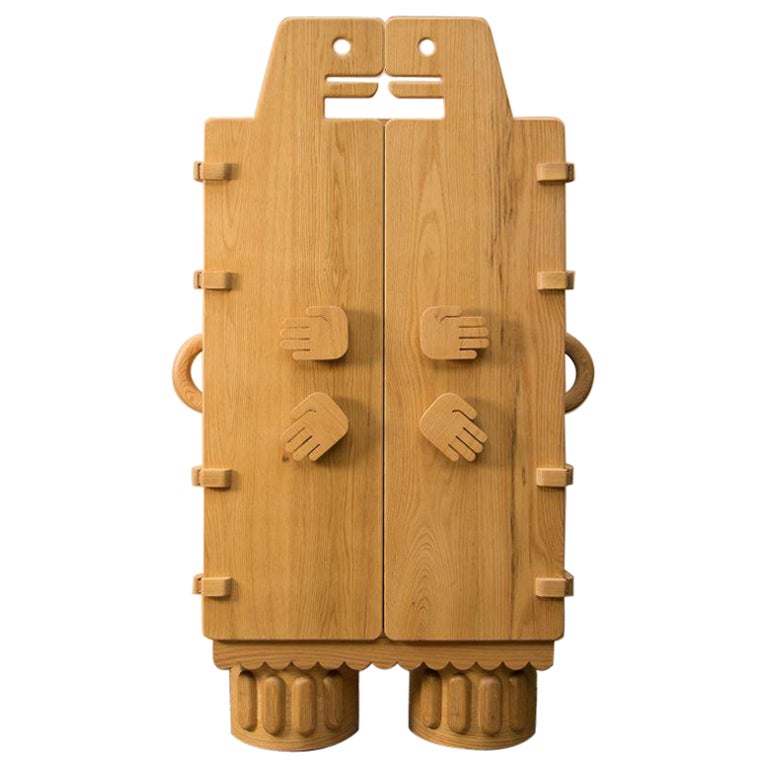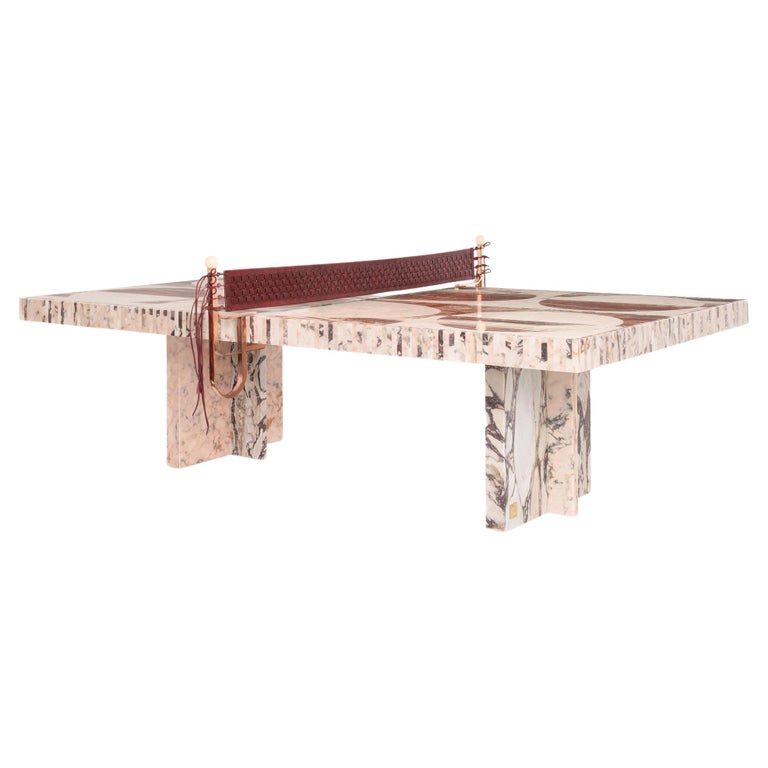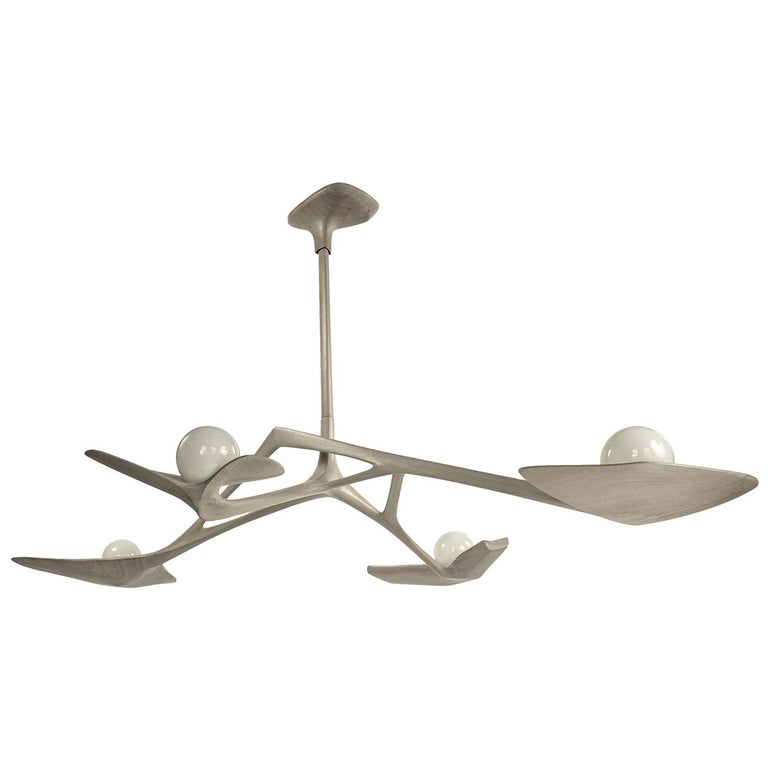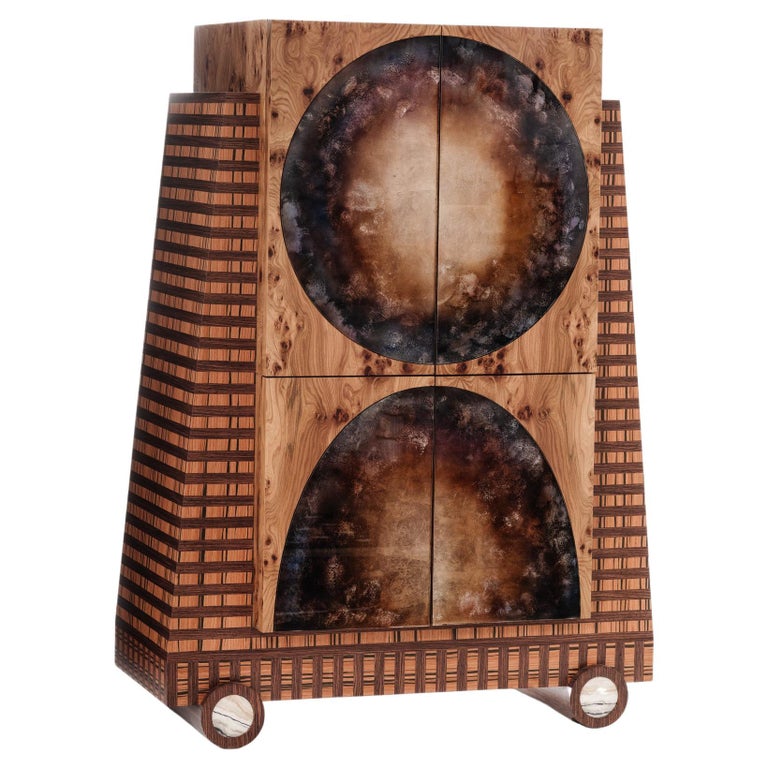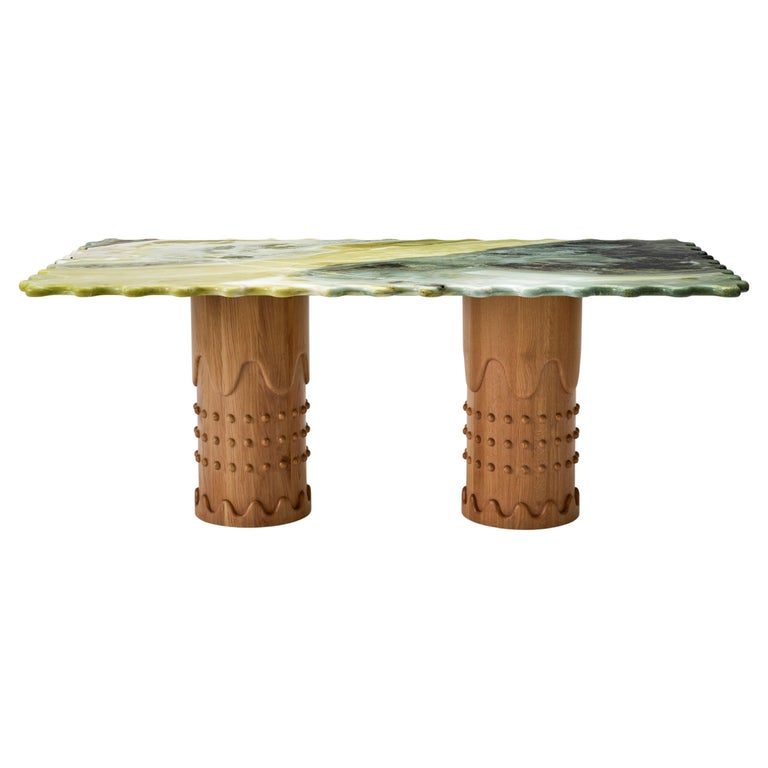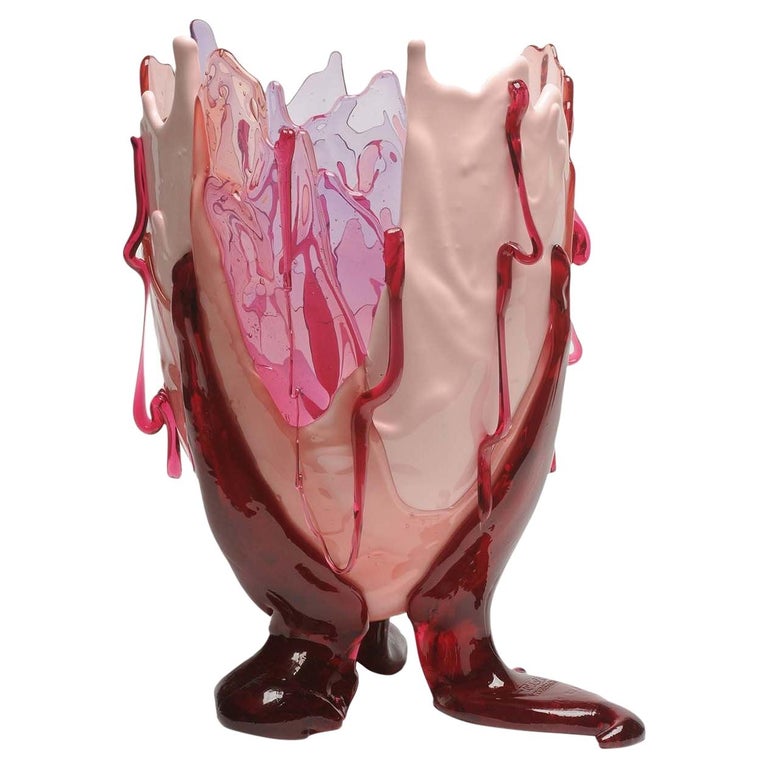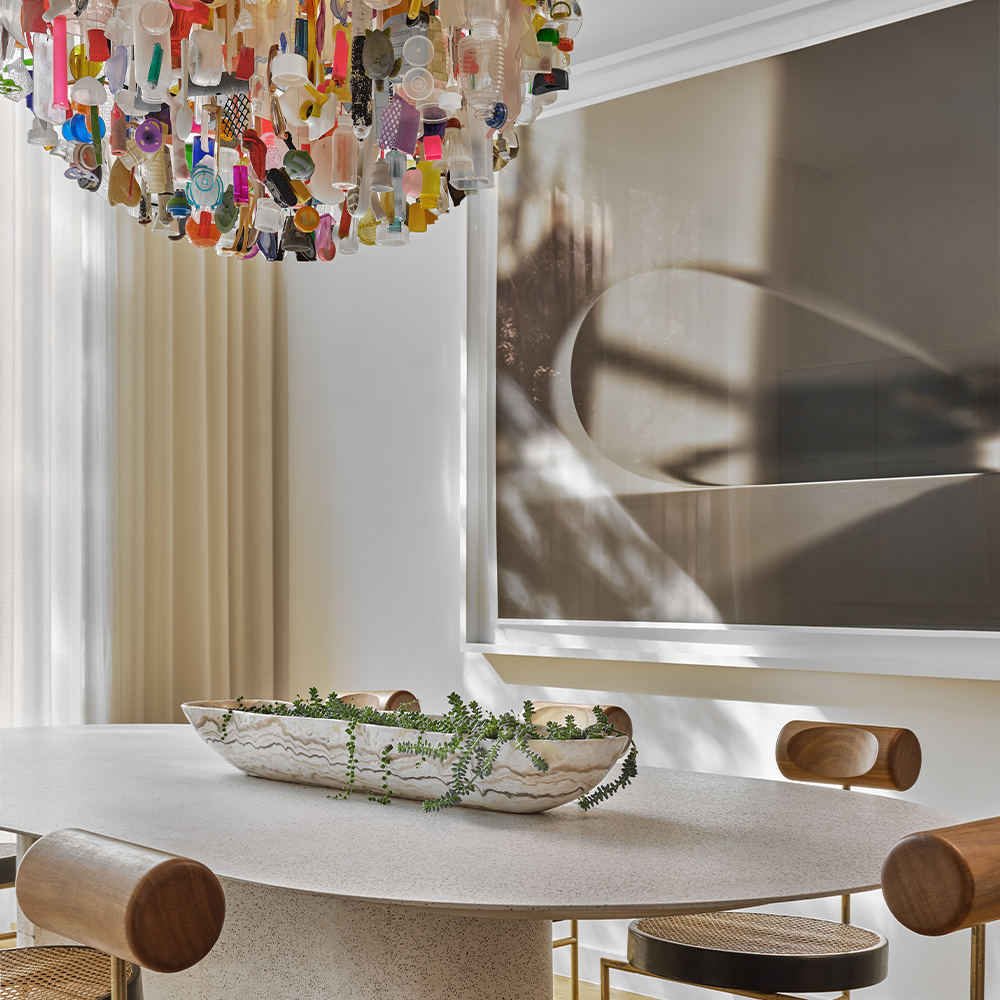February 9, 2025There’s more than a bit of Hollywood meet-cute in the how-we-met story of married designers Monica Santayana and Ronald Alvarez.
Architecture students at Miami’s Florida International University in the early aughts, they both experienced frustration when collaborating with classmates on group endeavors in their design studios — except when they worked with each other.
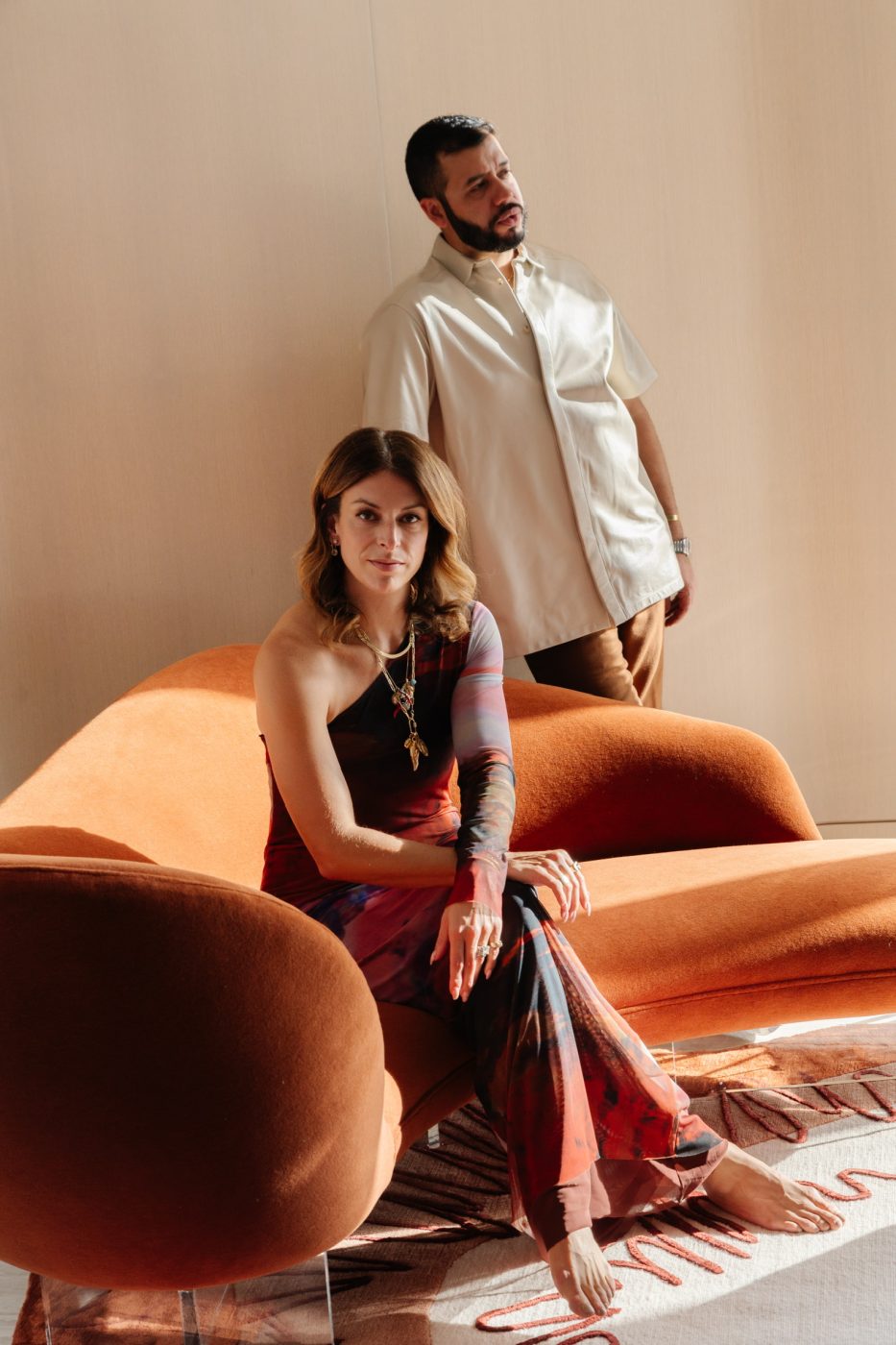
“We just started sharing projects,” recalls the Venezuelan-born Alvarez, admitting, “That wasn’t something we were very good at with previous people.”
“I hated group projects, except when it was us,” agrees Santayana, who was born and raised in Miami.
“When we met, we were each the first person the other felt they could trust,” says Alvarez. “That was a great indication that we could work together — and be together.”
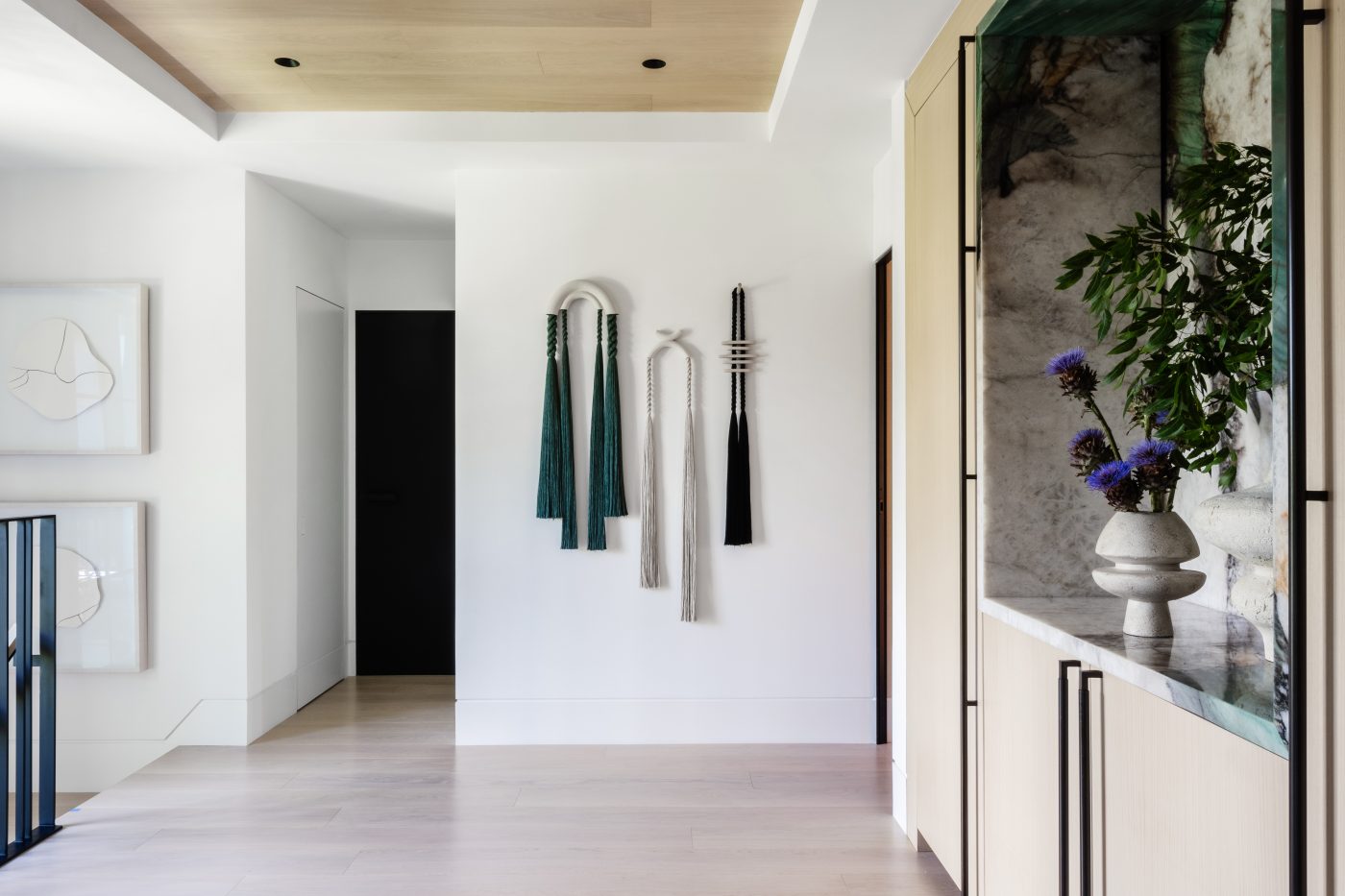
They fell in love over CAD drawings, scale models and surface details, and they’ve been together ever since, at first pursuing separate careers — he in marketing and digital advertising, she in the interiors department of a large architecture firm — while also partnering on small decorating jobs for friends and friends of friends.
They officially joined professional forces in 2012, with the launch of their Miami studio, Moniomi, which received almost immediate acclaim. (The company’s moniker owes its origin to a portmanteau Santayana and her high-school best friend created from their first names, Monica and Omar.)
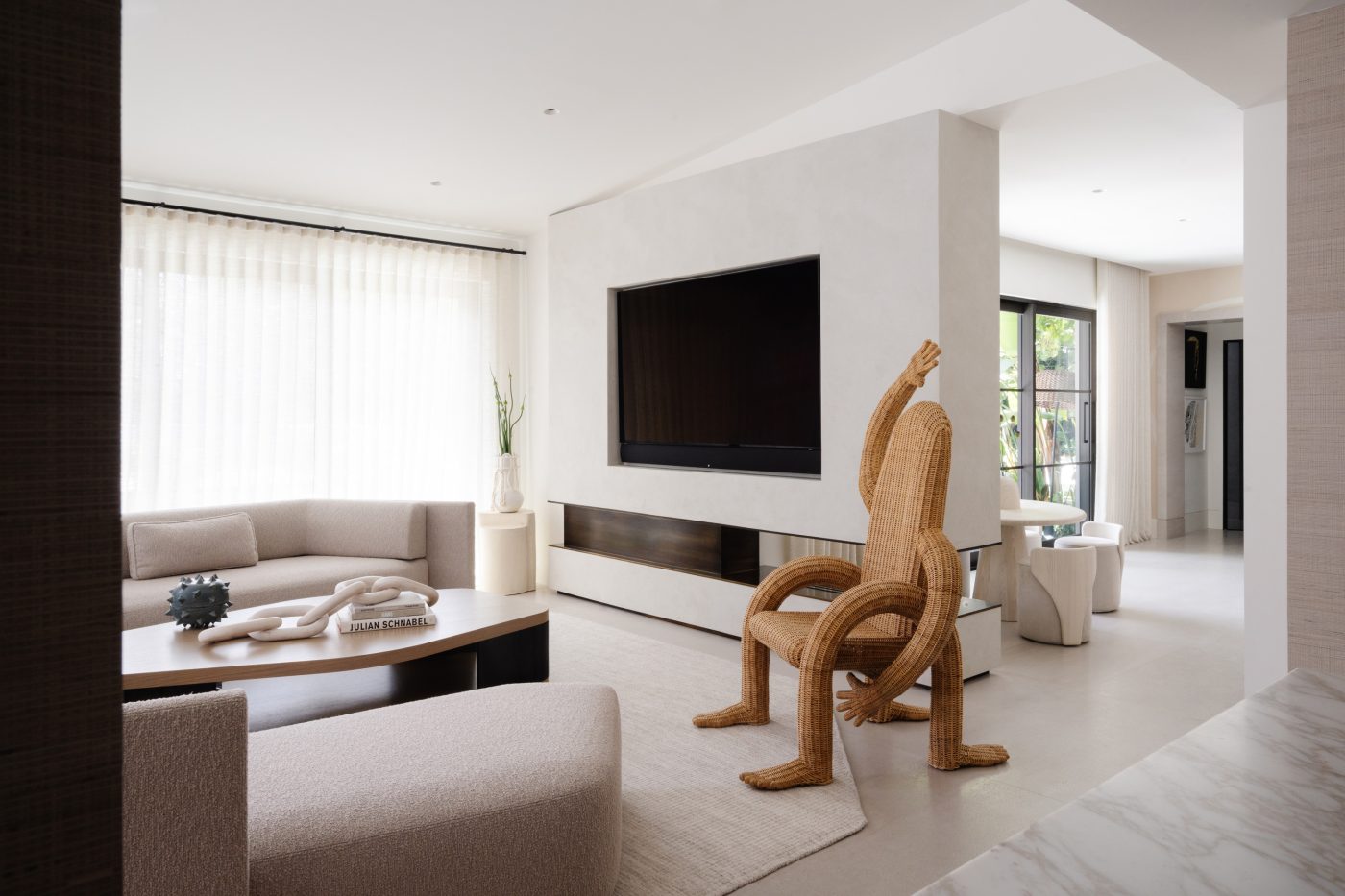
“When we decided to do this on our own, we started pretty big,” says Alvarez, with a smile, explaining that, while many designers launch their firms with an apartment renovation or a room redo, “our projects were immense from go.” The first was a 50,000-square-foot private jet center, the second a 100-plus-room hotel, both in Miami. Since then, they’ve done another 20 hotels for the same client.
“It was just the two of us and a friend helping us out, and we did it. We figured it out,” says Santayana. “That’s how we are.”
They’re also not afraid of bold, maximalist decorating gestures and surprising design moves, including distinctive combinations of textures, patterns and geometries, plus hues that go deep into small slivers of the color wheel. There’s always a healthy helping of tongue-at-least-slightly-in-cheek playfulness, too.
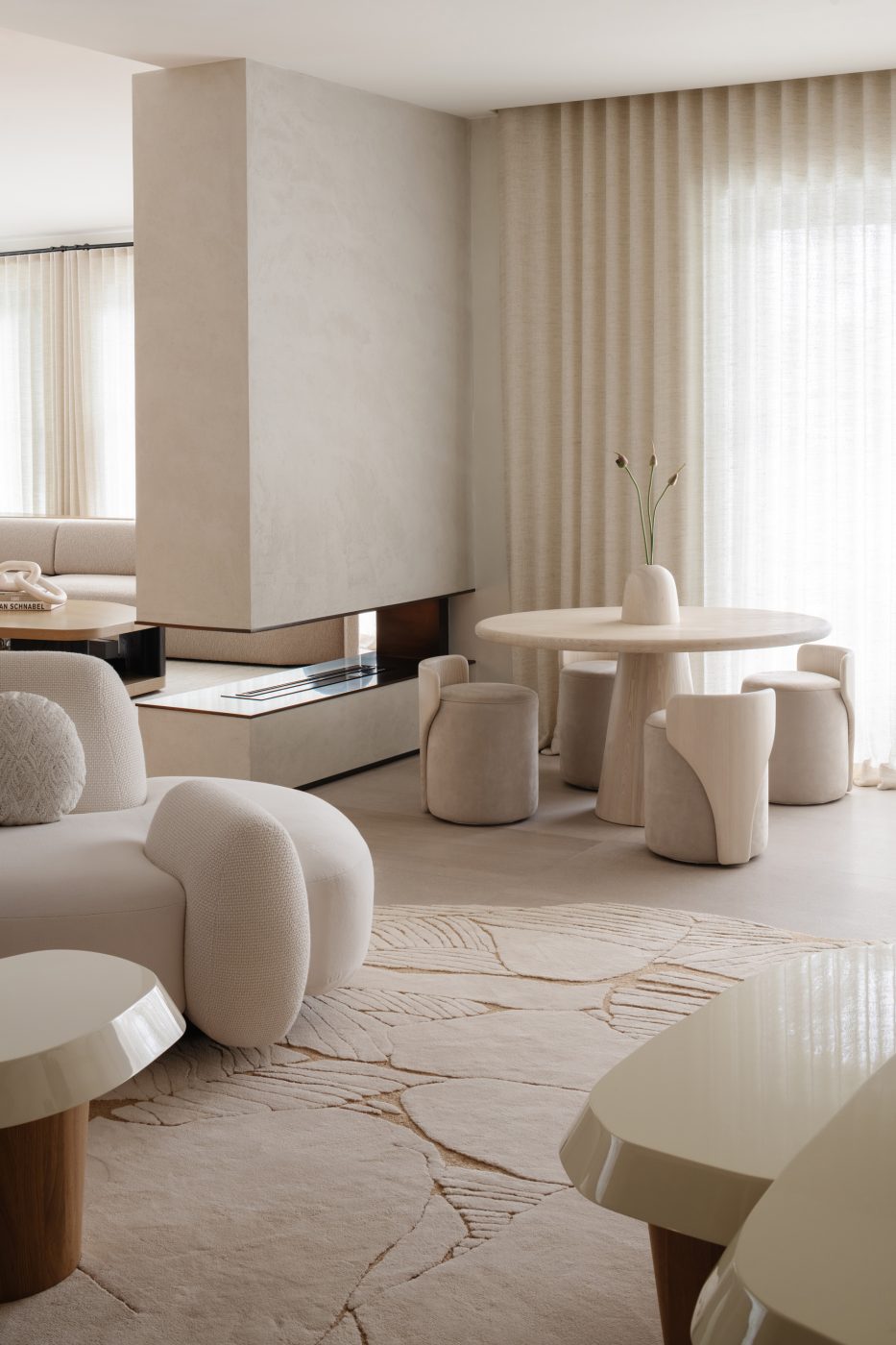
All that can be seen not only in their interiors but also in their collection of furniture and accessories, much of it custom or customizable and available on their MADE by Moniomi 1stDibs storefront: basketball hoops with thick macramé-style woven nets and graphic marble-mosaic backboards, inlaid-stone Ping-Pong tables whose surfaces resemble the floor of Rome’s Pantheon, a range of color-blocked hand-tufted wool-and-silk rugs whose patterns take inspiration from Olympic running tracks and much more.
If it all sounds rich, it is. But, says Alvarez, “one thing we have learned over the years is how to design with this sense of luxury without being in-your-face luxury.”

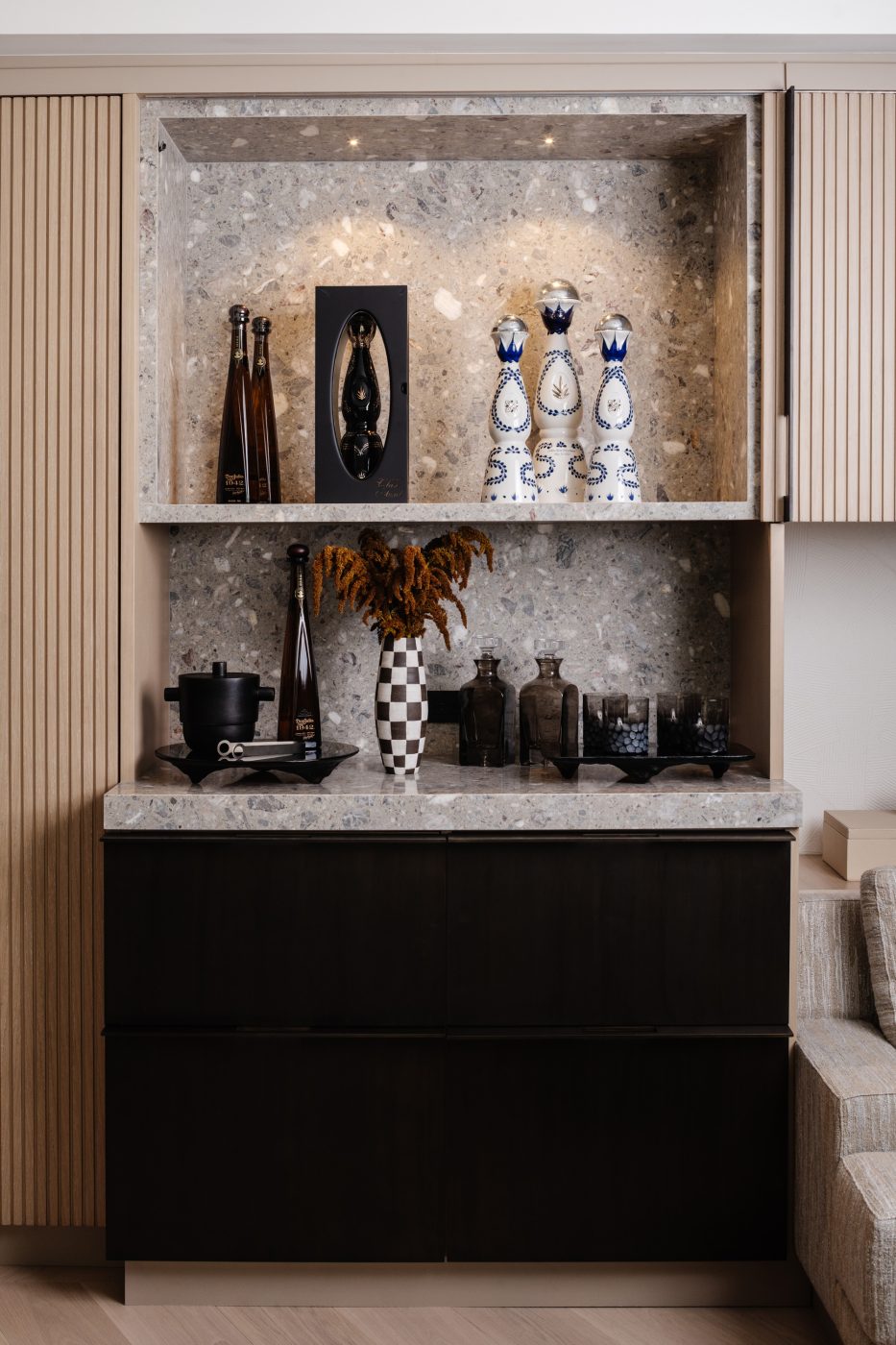
That approach is on deeply eye-pleasing — and life-enhancing — display in a home the duo recently completed for clients on a canal off Biscayne Bay in Miami Beach’s North Beach neighborhood.
“We like to make spaces that are energizing, happy reflections of who our clients are, that make them feel good,” says Santayana. And this place — a gut renovated 1980s house that formerly sported a colonial mien — has certainly done that for its homeowners.
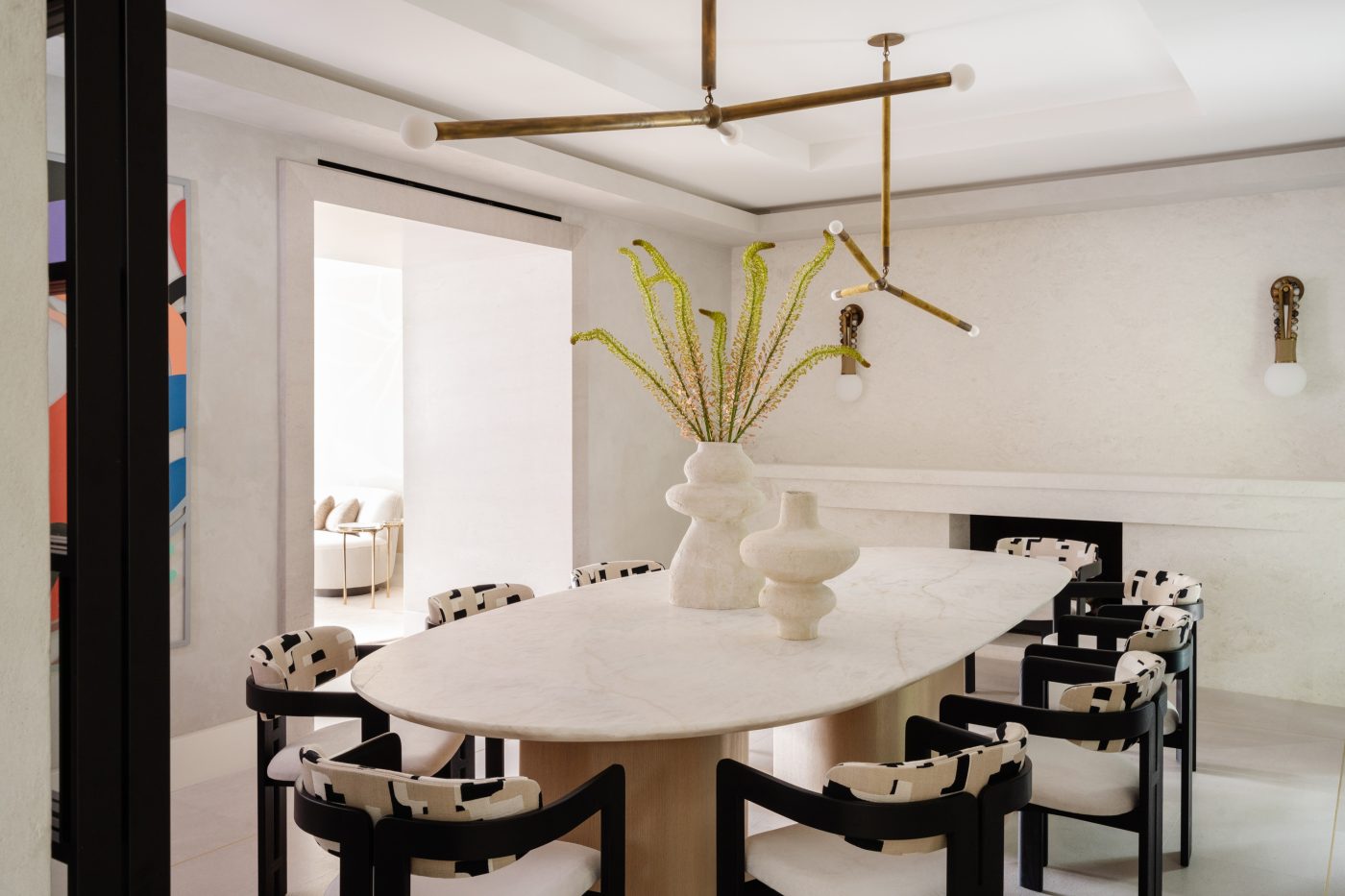
The young entrepreneurial couple with four little kids wanted a modern Mediterranean aesthetic that also aligned with Miami Beach’s design ethos. The wife, a company founder and CEO, says she found Moniomi’s designers “really helpful in letting us incorporate modernity without sacrificing Med elements,” whether it was arched entryways or a tiled barrel vault — but done in black. “They found a way to blend a modern aesthetic with a more traditional look.”
Thanks to their architecture training, experience and expertise, Santayana and Alvarez managed to create efficient, smart spaces in every nook and cranny — a powder room under the stairs here, a closet there, shoe storage over there. They also entirely reorganized the layout and circulation patterns to seamlessly connect indoors and out and turn the home into a hosting mecca.
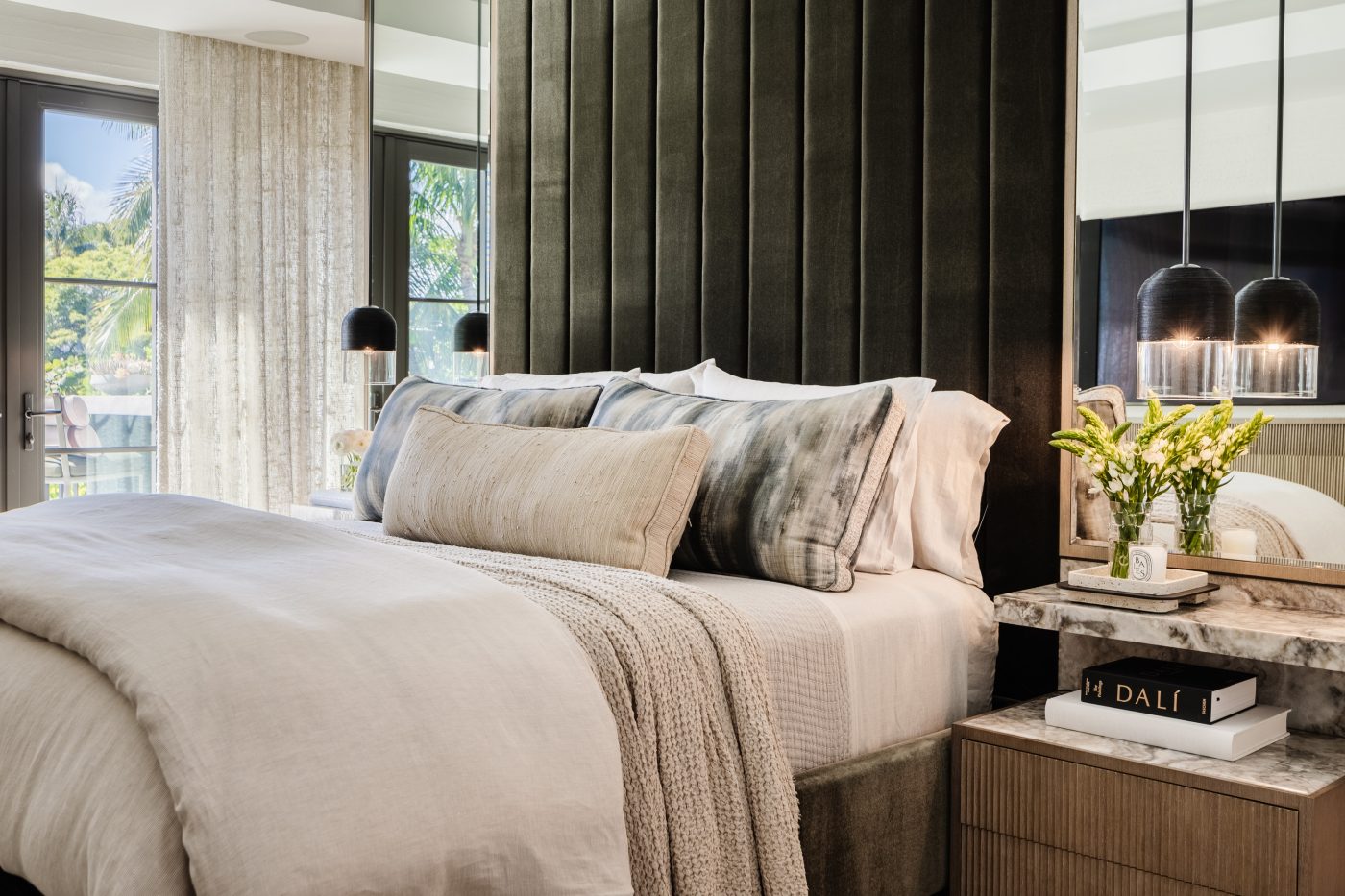
Drawing on their interior-design acumen, meanwhile, and their experience raising their own kids, they demonstrated “a unique appreciation for not compromising high style while creating a family-friendly environment,” recalls the wife, noting how happy she was to have found designers who knew that durability and functionality could coexist with artistry and an elevated aesthetic.
Adds her husband, who serves as president of the company she founded, “Ronald and Monica weren’t afraid to put performance textiles on fine-design furniture.”
The Moniomi team were also fearless in navigating what were semi-uncharted waters for them: “This is more Zen than the way we usually design,” says Santayana.
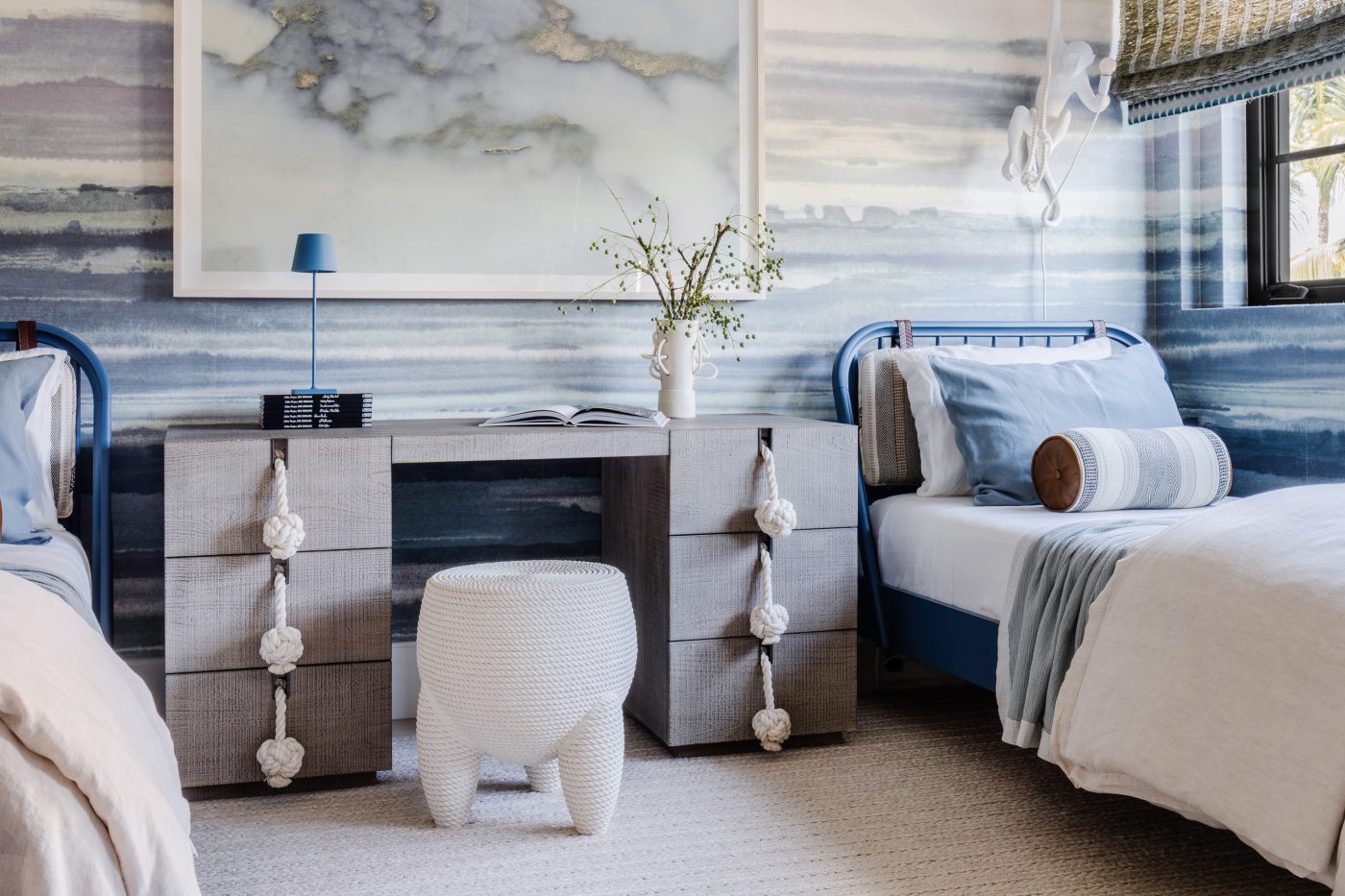
“The clients had this idea of being color-muted, peaceful and natural, subtle and beautiful,” says Alvarez, who helped them realize that idea. “But it still feels very rich.” He points to such luxe details as the primary bedroom’s marble-accented nightstands, the dining room’s brass-inlay floors and four different wall treatments and the leather and brass drawer pulls and onyx hooks in a closet/dressing room.
The signature Moniomi sense of whimsy is very much at play here, too. Take the figurative woven-rattan Christopher Wolston Nalgona chair in the family room. Its legs have actual humanoid feet with toes, and one of its arms rises above its back as if waving, or ready to give a high five.
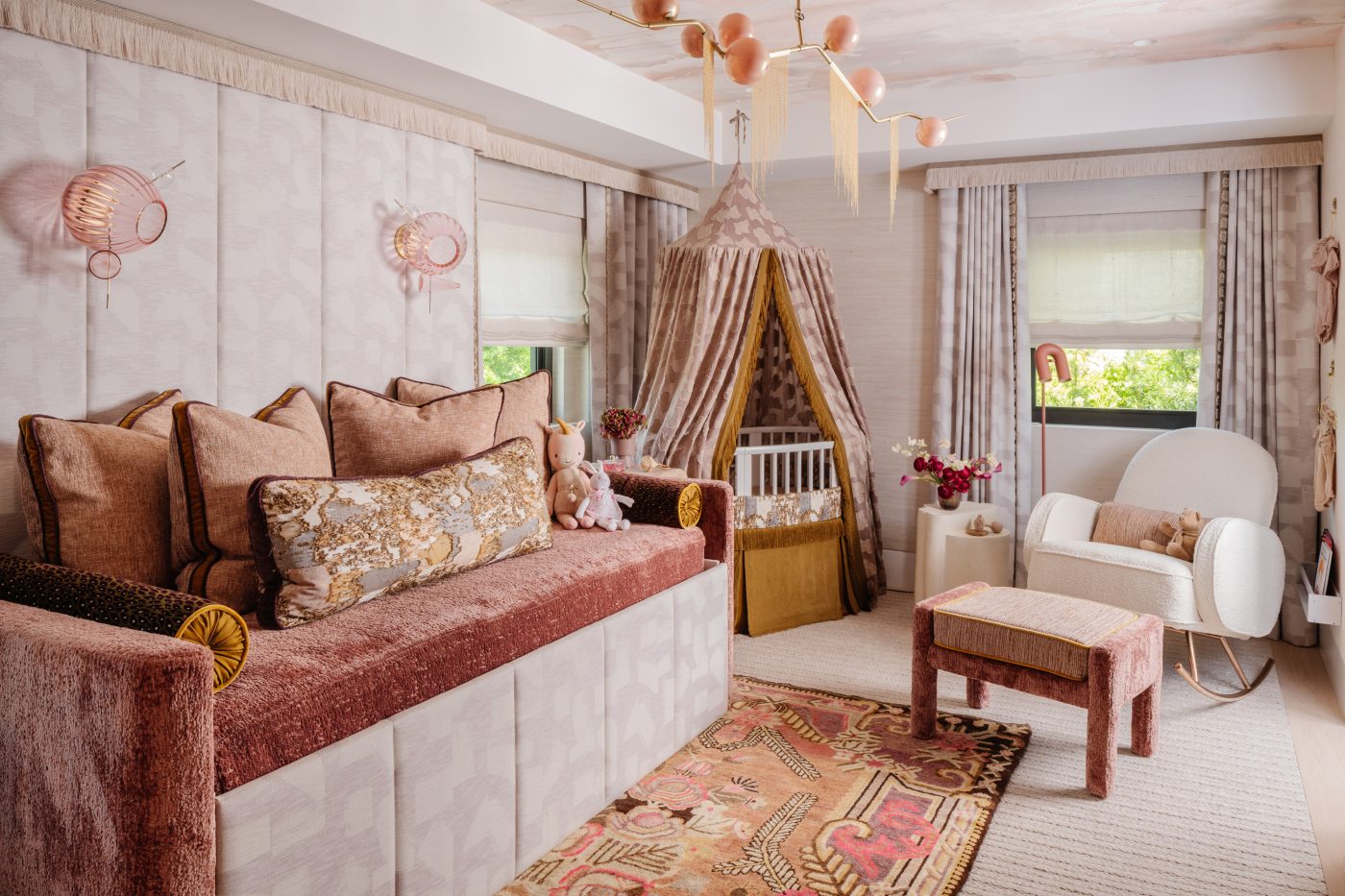
“The Wolsten was the pivot in how we designed,” recalls Alvarez. “We could be more open, daring. When that chair was approved, we realized the sort of other things we could propose.”
This led them to such engaging fine-design finds as the living room’s bulbous, curving contemporary couch by Mathieu Lehanneur and modern-classic Vladimir Kagan Serpentine sofa. These sit across the room from each other, divided by a chunky, lacquer-topped coffee table by Pierre Augustin Rose, the entire arrangement overseen by a wooden Thomas Newman chandelier resembling abstracted branches set with glowing orbs.


As for the clients, they’ve found that some of their favorite artfully designed moments in the house require them to look up: “With four kids under the age of eleven, we chose to invest in things they couldn’t touch,” jokes the wife.
She points to chandeliers like the living room’s Newman, as well as the stair hall’s steel-and-wood, wind-chime-inspired Stickbulb Lighting piece and a hanging palm tree fixture which — like the entire house — is what she calls “a beautiful nod to Miami.”

